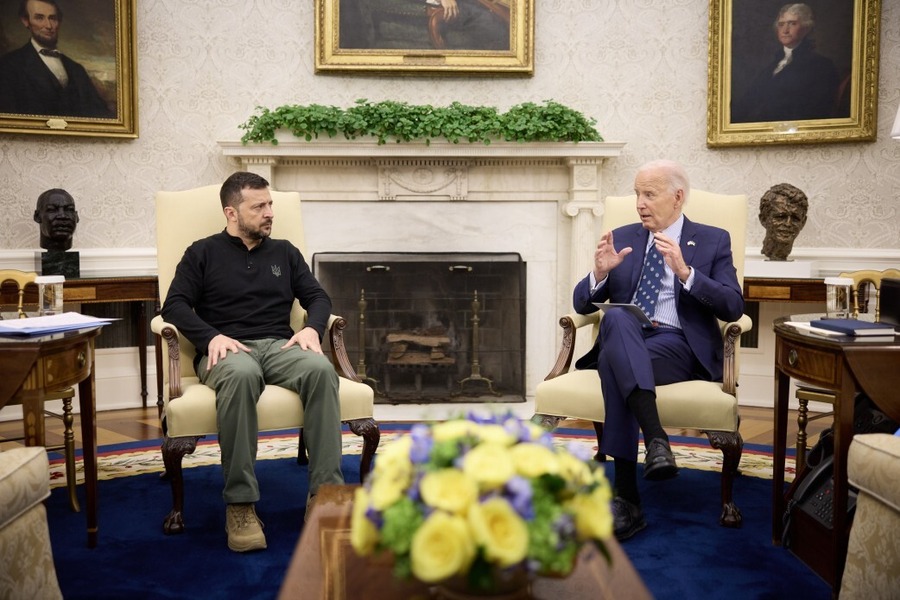U.S. Airstrikes Against ISIS in Syria? Possible International Legal Theories
In the wake of Thursday’s statements by Joint Chiefs Chairman Martin Dempsey and Friday’s comments by Deputy National Security Adviser Ben Rhodes, it sounds like the U.S. Government is at least considering whether to conduct air strikes against ISIS in Syria. A decision to do so clearly is not a done deal.
Published by The Lawfare Institute
in Cooperation With

In the wake of Thursday’s statements by Joint Chiefs Chairman Martin Dempsey and Friday’s comments by Deputy National Security Adviser Ben Rhodes, it sounds like the U.S. Government is at least considering whether to conduct air strikes against ISIS in Syria. A decision to do so clearly is not a done deal. As the Times notes, “From the start of the Syrian civil war, Mr. Obama’s response has been marked by a pattern of heightened public statements and indications of stepped-up involvement, following by far less action than suggested.” Other options on the table include arming and training other forces fighting ISIS, such as Syrian Kurds and moderate Syrian rebel forces.
But if U.S. officials are floating trial balloons about air strikes, that means international lawyers inside the government are putting pen to paper to analyze whether and how such actions would be compatible with international law. What will that memo likely say? I expect the analysis would discuss the following options.
Security Council Resolution. A UN Security Council Resolution would provide the clearest basis for action. This option was a dead letter back in July 2012, when Russia and China refused even to approve economic sanctions against Assad, let alone the use of military force. One question would be whether the politics on this have changed: there might be some reason to think that Assad is coming under pressure from his own supporters to take on ISIS. It seems unlikely that Assad would affirmatively embrace a UNSCR authorizing a coalition of the willing to target ISIS in Syria, but if Russia senses that Assad might tolerate such action, the Security Council dynamics could change. Then again, the U.S.-Russia relationship is so toxic right now that this option seems remote.
Consent. Second, Assad could secretly give consent to foreign governments (including the United States) to use force against ISIS in Syria. This, too, seems improbable, given the longstanding animosities between Assad and various Western governments. But having one government give secret and reluctant consent to another to conduct strikes in its territory is not without precedent. As readers know, the Pakistani government reportedly consented to U.S. drone strikes in Pakistan for years, while publicly condemning those strikes and rejecting allegations that it had consented. This type of situation raises questions about the quality and integrity of the consent, but it might nevertheless be on the table.
Self-defense. Here there may be three categories of self-defense arguments: basic self-defense, anticipatory self-defense, and collective self-defense. The basic self-defense argument goes as follows: The President in his August 17 WPR letter to Congress identified ISIS as posing a threat to U.S. personnel and facilities, including the Embassy in Baghdad, and apparently concluded that this triggered the U.S. government’s right to respond in self-defense. ISIS subsequently killed a U.S. national, James Foley (presumptively in Syria, though the facts aren’t clear), and may be poised to harm another a U.S. hostage. The United States presumably would argue that force against ISIS is necessary because alternatives such as negotiations or sanctions clearly will not be sufficient to suppress the ongoing threat posed by ISIS to U.S. interests and nationals. Air strikes targeting ISIS would be a way to try to stop the current threat and foreclose future, similar threats. How broadly those strikes could occur while remaining proportional to the threat posed could be a complicated question.
The U.S. memo here might point to cases such as the U.S. response to the bombing of the Labelle disco in 1986. In that case, the Government of Libya orchestrated a bombing at nightclub in Berlin frequented by U.S. service members. One service member died and 64 Americans were wounded. In response, President Reagan ordered strikes on terrorist training facilities in Libya, among other targets. There are two potentially relevant differences, however: the number of Americans affected by the bombing and the fact that the responsive force in the Libya case took place in and against the state alleged to have conducted the bombing. In any case, if the United States invokes a self-defense argument here, it also will need to assert that it can overcome Syria’s sovereignty and territorial integrity to pursue ISIS because Syria has shown itself to be unwilling or unable itself to suppress the threat ISIS poses.
A related argument is one that relies on anticipatory self-defense. The idea here is that the United States (and perhaps states such as the UK and France) are facing the imminent threat of an armed attack from ISIS, and must take forcible action before those attacks occur. As former Ambassador to Iraq Ryan Crocker argued yesterday, “Unlike any variant of Al Qaeda since 9/11, [ISIS] controls significant territory where, secure from attack, it has the space and time to plan its next set of operations. Anyone who believes the U.S. is not on that list is delusional.” An act of anticipatory self-defense that occurs when the potential victim state is virtually certain about the time, place, author, and fact of the future attack is not unduly controversial. But as the threats to the victim state move further from manifesting themselves in short-term and concrete ways, pre-attack self-defense becomes increasingly contested. (Recall the 2002 National Security Strategy, which spoke of the right to respond “even if uncertainty exists as to the time and place of the enemy attack.”) I am not aware of specific information regarding current threats by ISIS to U.S. interests; the more specific, serious, and tangible those threats, the stronger the case for anticipatory air strikes.
A third variant of the self-defense argument is one of collective self-defense. Assume (as seems clear) that Iraq has suffered multiple armed attacks from ISIS within Iraq. Iraq itself theoretically could use force in self-defense against ISIS forces that have retreated into Syria to rest and recoup, assuming that Syria was harboring those forces or proved unwilling or unable to stop ISIS attacks in Iraq. If this is so, Iraq could ask other states for assistance in its own defense – and those states could respond in collective self-defense. This theory would limit the scope of action of those helping the Iraqi government: those providing assistance only could do so to the extent necessary to quell ISIS in Iraq and ensure that ISIS was unable to conduct future attacks there. The approach also would be contingent on Iraq’s consent, which it could withdraw. As a political matter, it seems doubtful that the United States would find this to be an appealing approach, particularly if it perceives its own national interests to be at stake.
Ongoing armed conflict. At least one other legal argument might end up in the U.S. government memo being penned. The United States seems to have concluded that it is in an armed conflict with AQAP. In mid-August, AQAP announced on its website its public support for ISIS. What is not clear is whether the two groups have any operational links between them. One expert told the Yemen Times that ISIS gunmen were training fighters in Yemen, and that some AQAP members had gone to fight in Iraq. If the two groups begin to intertwine, the United States might consider that ISIS has become an “associated force” of AQAP, rendering ISIS targetable under the same theory that AQAP is. Former DOD General Counsel Jeh Johnson noted that, in the U.S. view, "associated forces" means an organized armed group that (1) has entered the fight alongside al Qaeda; and (2) is a co-belligerent with al Qaeda in hostilities against the United States or its coalition partners. Whether ISIS meets this standard as a factual matter is hardly clear. And even if this serves as an underlying international legal theory for targeting ISIS forces, the United States still would have to confront the sovereignty/territorial integrity issues involved in using force against ISIS in a foreign state.
None of these arguments is straightforward. We therefore might expect to see the USG rely on several different legal theories in a belt and suspenders approach. As it did in support of the Kosovo bombings, the USG might also lay out various unique “factors” that, in its view, render the use of force in Syria against ISIS legally appropriate – or at least legitimate.
Ashley Deeks is the Class of 1948 Professor of Scholarly Research in Law at the University of Virginia Law School and a Faculty Senior Fellow at the Miller Center. She serves on the State Department’s Advisory Committee on International Law. In 2021-22 she worked as the Deputy Legal Advisor at the National Security Council. She graduated from the University of Chicago Law School and clerked on the Third Circuit.




.jpg?sfvrsn=8588c21_5)
